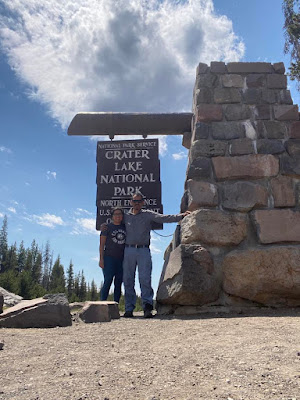Jose Saramago’s The Gospel According to Jesus Christ: Book Review
By Armando Ortiz
Have you ever wondered why many of our holidays revolve around the life of Jesus? Jose Saramago’s novel, The Gospel According to Jesus Christ, explores the missing instances of Jesus’s life and their impact on Earth. His story will make readers reconsider the impact that narrative has had on our lives. In this essay I will briefly summarize key points of the novel and then reflect on its significance alongside the Bible.
The novel presents a unique portrayal of Jesus living in the Fertile Crescent's cultural milieu. Saramago delves into Jesus’ character, emphasizing his inner conflicts about his destiny and the impact he will have on civilizations.
Saramago’s Jesus is attempting to come to grips with his existence, and his desire for guidance creates empathy for him. He is rejected by his family and embraced by his companion Mary. He questions the need for rituals, as when he purchases a lamb to take to the temple, and then questions the eventual sacrifice of his body.
In one scene, Jesus attempts to help out the communities he visits, but ends up adversely affecting the other surrounding towns of the lake. Scenes like these will make you think of our own choices and actions with the reactions that occur.
While in the middle of the Sea of Galilee he confronts his creator. During that meeting the fallen angel who announced his birth, and taught him to become a shepherd appears. The devil’s appearance is not intended to incite but to observe and study the deity- turned human. The pastor, in his own way, assumes a role offering alternatives, and raises questions about the evolving realities. This prompts Jesus to contemplate his existence and the path his life has taken. Saramago’s devil isn’t the horned demon that we’ve all come to know from the bible and ideas that orbit Western thought. Satan shows up to observe and to ask questions.
Furthermore, Saramago’s character is open to learning and following. Jesus is autonomous, although not so free from the perspective of the devil. The novel makes you question the existence of Jesus. Whether for good or bad, his life and ideas ended up having an impact on human history. Saramago’s character lets himself be taken by the flow of experiences, getting as dirty as we get. He never claims to be free of sin, and religious piety is non-existent in light of the unreasonable religious demands. He has a clean spirit, but is physically impure. He becomes like one of us.
Nevertheless, the lingering question posed by this novel is whether the scenes from the Bible being portrayed are fiction. This renders all associated ideas within it as fictional. Heaven and hell, good and evil, and all other beliefs connected to the bible are turned upside down by Saramago. After reading the novel I wonder what premises would horror movies have to use if the Christianity did not exist. Morality and sin would be seen from a different perspective. The land where all these events supposedly happened wouldn’t be as sacred and holy as religions claim it to be.
All we have seen in the last two thousand years has been a shadow, the end result, of a narrative that’s had a deep effect on all humanity. Millions of people have been forever affected by the doctrines that emerged in that region of the world. Ideas that sprouted from there altered the trajectory of humanity.
We only know of Jesus from what the bible tells us, the miracles made, but we don’t get insights into his intentions or into his mind. Saramago’s tale takes place, behind the scenes, the events that were not written down as Jesus became the savior, the perfect lamb to be sacrificed. He places us in the mind of Jesus. For example, Jesus refused to sacrifice his first lamb, refusing to follow the traditions of his people. Yet, what if Jesus had lived the way described in the novel, and what if his mundane interactions and miracles were acts to help those around him. If his attempts at making peace with humanity were true then it would be another story in the series of narratives that describe his life.
Building on this idea, if the impact of Saramago’s tale were similar to the narrative found in the bible, all our belief systems would be different. The conquest of the Americas and the ideas that Natives worshiped the devil would have to change. The religious narratives that emerged out of the bible to justify religious traditions, conquests, and massacres would have been different. Love would be interpreted from a kinder, sympathetic and empathetic perspective like in Saramago’s novel. The beliefs of the second coming of Jesus, Judgement Day and the resurrection would be canceled forever.
Jesus experiences love, family rejection, gossip, town controversy. He has difficulties managing the powers bestowed upon him by the maker. He knew the die was cast and had to follow through with the guilt of knowing what had happened. The visits by a magical being, his father’s cowardice and desire to keep him alive. His unwillingness to make an offering at the temple, experiencing human compassion, kindness from people one would least expect, and falling in love. These scenes and events are left out from the stories found in the Bible.
In much the same way that the world’s savior narrative emerged, Saramago weaves a narrative that aligns with our preconceptions of who Jesus was- just a person living his life. A man trying to orient himself in the realities that he was living under. Born out of thin air into a milieu of beliefs and traditions, like a puff of smoke, that only reinforced the beliefs of orthodox ideas of other traditions intimately connected to the bible.
In conclusion, Saramago prompts readers to ponder Jesus’ beyond the traditional narrative, challenging established beliefs. His character undergoes love, rejection, controversy, and compassion, humanizing the figure we know today. The novel invites us to explore the impact of second-hand ideas on a global scale. Yet, the narrative also lets us consider the aspects that make us human on a daily basis, showing compassion, helping those in need of help, loving those around us, and sharing time with those that love us back.






















